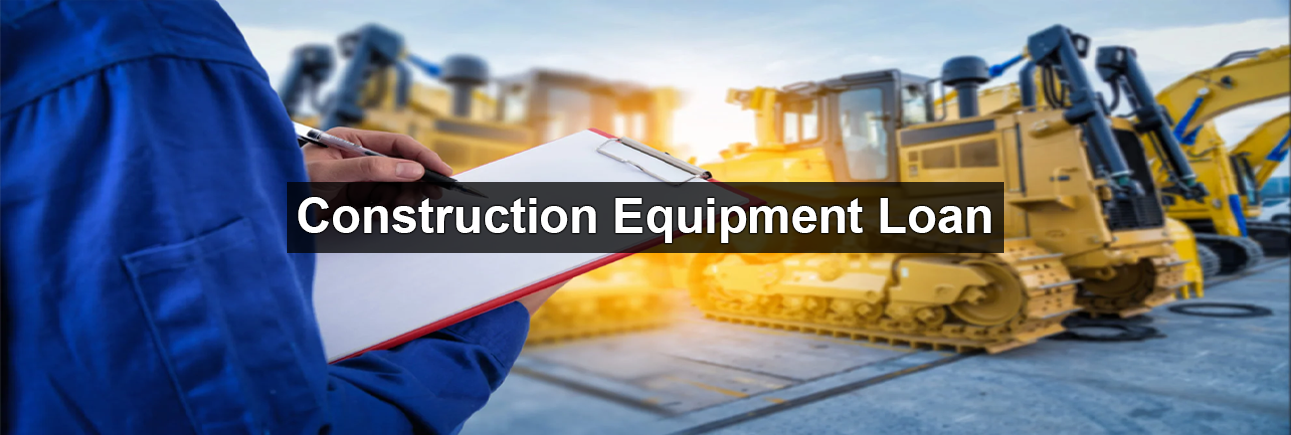

Welcome to our in-depth exploration of construction equipment loans, authored by CA Vikas Jain. In this blog, we will navigate through the essential aspects of financing the heavy machinery and equipment necessary for construction projects. Whether you are a contractor, a business owner in the construction industry, or simply interested in learning about how these loans work, this blog will provide you with comprehensive insights and practical guidance.
Q1: What is a construction equipment loan?
Q2: Why are construction equipment loans important for businesses?
Q3: What types of construction equipment can be financed through these loans?
Q4: How does one apply for a construction equipment loan?
Q5: What factors should borrowers consider when seeking a construction equipment loan?
In the subsequent sections, we will answer these questions in detail, covering everything from the types of equipment that can be financed to the application process and key considerations for borrowers. Join us as we delve into the world of construction equipment loans and uncover how they can help your business grow and succeed.In the upcoming sections, we will answer these questions in detail, guiding you through the nuances of dropline overdraft limits. From understanding how they work to the application process and best practices for their use, this blog is designed to provide you with a comprehensive understanding of this financial tool. Stay with us as we explore how dropline overdraft limits can help your business manage cash flow more effectively and seize growth opportunities.
In the construction industry, having access to the right equipment is crucial for the successful completion of projects. However, the high cost of construction machinery often makes it challenging for contractors and construction firms to purchase equipment outright. This is where construction equipment loans come into play. These loans provide the necessary financing to acquire machinery and equipment, enabling businesses to operate efficiently and complete projects on time. In this detailed guide, we will explore what construction equipment loans are, their benefits, types, application process, and key considerations for borrowers.
A construction equipment loan is a type of financing specifically designed to help businesses purchase new or used construction machinery and equipment. These loans cover a wide range of equipment, including excavators, bulldozers, cranes, loaders, and other heavy machinery. By securing a construction equipment loan, businesses can spread the cost of the equipment over a specified period, making it more manageable to acquire essential tools without depleting cash reserves.
Construction equipment loans offer several advantages:
Preserve Cash Flow: By financing equipment purchases, businesses can preserve their working capital for other operational needs and unexpected expenses.
Access to Modern Equipment: Loans allow businesses to acquire the latest and most efficient equipment, enhancing productivity and project quality.
Flexible Repayment Terms: Lenders typically offer flexible repayment terms, allowing borrowers to choose a schedule that aligns with their cash flow and project timelines.
Tax Benefits: Interest paid on construction equipment loans is often tax-deductible, providing potential tax benefits to the borrower.
Ownership and Equity: Unlike leasing, a construction equipment loan allows the borrower to build equity in the equipment, which can be a valuable asset for the business.
There are various types of construction equipment loans available, tailored to meet different business needs and circumstances:
Secured Equipment Loans: These loans use the equipment being purchased as collateral. This typically results in lower interest rates and more favorable terms.
Unsecured Equipment Loans: These loans do not require collateral but may come with higher interest rates and stricter lending criteria due to the increased risk for the lender.
Equipment Leasing: Although not a loan per se, equipment leasing is an alternative financing option where the lender purchases the equipment and leases it to the borrower for a specified period.
Hire Purchase Agreements: Under this arrangement, the borrower hires the equipment and makes installment payments. Ownership transfers to the borrower after the final payment.
Applying for a construction equipment loan involves several key steps:
Assess Equipment Needs: Determine the specific equipment required for your projects and obtain quotes from reputable suppliers.
Prepare Financial Documents: Gather necessary financial documents, including balance sheets, income statements, tax returns, and bank statements. Lenders will use these to assess your creditworthiness.
Choose a Lender: Research and compare lenders to find one that offers favorable terms and understands the construction industry.
Submit a Loan Application: Complete and submit the loan application, providing detailed information about your business, the equipment being purchased, and your financial status.
Undergo Credit Evaluation: The lender will evaluate your credit history, financial health, and the potential value of the equipment.
Loan Approval and Disbursement: Once approved, the lender will disburse the funds, allowing you to purchase the equipment.
Repayment: Begin making scheduled repayments according to the agreed-upon terms.
Before applying for a construction equipment loan, consider the following factors:
Credit Score: A strong credit score can improve your chances of loan approval and result in better terms and interest rates.
Equipment Value and Depreciation: Evaluate the value and expected lifespan of the equipment. Ensure that the equipment will generate sufficient revenue to justify the investment.
Loan Terms and Interest Rates: Compare loan terms, interest rates, and repayment schedules from multiple lenders to find the best deal.
Financial Stability: Assess your business's financial stability and ensure you can meet the loan repayments without compromising operational efficiency.
Tax Implications: Understand the tax implications of the loan, including potential deductions for interest payments and depreciation.
Construction equipment loans are a vital financial tool for businesses in the construction industry, enabling them to acquire the machinery needed to complete projects efficiently and competitively. By understanding the different types of loans, the application process, and key considerations, borrowers can make informed decisions and secure the financing needed to support their operations. Properly managed, construction equipment loans can enhance productivity, preserve cash flow, and contribute to the long-term success of a construction business.